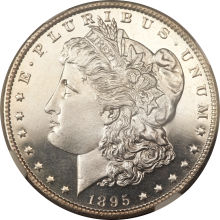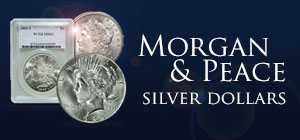1918 Pittman Act: Boondoggle or Necessary Morgan Dollar Massacre?

Most collectors of U.S. coins are at least vaguely aware of the Pittman Act of 1918, which resulted in the melting down of over 270 million silver dollars (mostly Morgans), and the sale of the bullion overseas. The U.S. Mint was then required to buy bullion from U.S. mining companies at above-market rates, and mint replacements for the silver dollars that had been melted down!
Sounds like typical government waste of taxpayer money, doesn't it? That first impression might not reveal all the facts, though.
While it is true that the Act was meant to help silver mining companies in the western states, that wasn't the main point. In fact, a good portion of the Act was written to buy the cooperation of silver state politicians in something that just might have saved World War I for the Allies.
The Triple Entente (aka “the good guys”) in WWI were rapidly subjected to the rampant inflation that accompanies war. Since international trade back then was conducted in gold, and the Allies needed steel, food, and supplies to build and maintain the largest armies the world had seen (to that point), they pulled their gold coins out of circulation. The rising price of gold meant that the gold content exceeded the face value of the remaining coins anyway, which led to their hoarding.
Since there was no gold available, Britain was using silver certificates to pay for goods and services from its colony of India, which was a major contributor to the war effort. Germany started spreading the rumor that the government did not have the silver to back the paper certificates it was using for purchases of war goods (which actually was true.) Emotions ran high, and the independence movement, which had quieted down during the war, hit a fever pitch. The UK was looking at the very real possibility of needing to sue for peace with Germany, as it would take most of the British Army to put down a revolution in India.
The only place on Earth that England could get its hands on enough above-ground silver in time to avert disaster was the United States. The U.S. also used paper silver certificates as money, which the public much preferred to big old clunky silver dollars. However, every dollar in silver certificates was backed by silver dollars in Treasury vaults, and could be redeemed at will. The American government, of course, did not want to see their side lose the war, and also saw a chance to use the situation to their advantage.
Since the U.S. had no planes or tanks of its own, it needed to buy them from the British and French. This meant the U.S. was on the hook to its erstwhile allies for a considerable sum. America wanted to hold on to at least some of its gold reserves for the post-war period, and the European powers were desperate for fresh American soldiers in the massive war of attrition that had decimated the armies of both sides. Thus, the Americans (who had silver up to their ears) figured that Britain and France would be happy to take silver instead of gold as settlement for the debts.
When the India crisis hit Britain and they appealed to America for help, all the pieces seemed to fall in place. Except one.
The U.S. government planned to melt up to 350 million existing silver dollars into bullion and sell it to Britain, to prevent collapse of India's (and thereby Britain's) economy. The silver mining interests in the American West and their politicians were terrified that Eastern interests would use the opportunity to eliminate the silver dollar, reducing the government's demand for silver. In order to placate them and win support for the measure, Congress promised to buy silver from Western silver miners after the war at the same $1/oz it charged Britain, and re-mint replacements for every silver dollar melted down.
All in all, it went pretty well (except for silver dollar coin collectors!). Britain was able to honor its silver certificates, preventing a banking collapse and revolution in India. The U.S. paid off some $200 million of its war debt from the sale of the silver. And the American silver industry was able to use the government to short sell three years of post-war silver output at much higher wartime prices, while selling wartime output to Britain.
The U.S. Mint was able to recoup some of the seigniorage lost from melting down the 270 million silver dollars by using 8.59 million ounces to mint much-needed dimes, quarters, and halves. These lesser coins had less silver content per face value, meaning increased seigniorage. As replacement silver dollars (the new Peace Dollars) were made, they were used to buy wartime Federal Reserve Notes (which were not backed be silver) and retire them.
Scholars note that the Pittman Act needs to be seen as an emergency war-time measure, rather than a monetary measure. By those standards, it was a rousing success, since it basically saved the war for the Allies, and didn't lose the government any money.
Gainesville Coins offers raw and certified Morgan and Peace dollars, as well as other old silver coins.

Steven Cochran
A published writer, Steven's coverage of precious metals goes beyond the daily news to explain how ancillary factors affect the market.
Steven specializes in market analysis with an emphasis on stocks, corporate bonds, and government debt.

